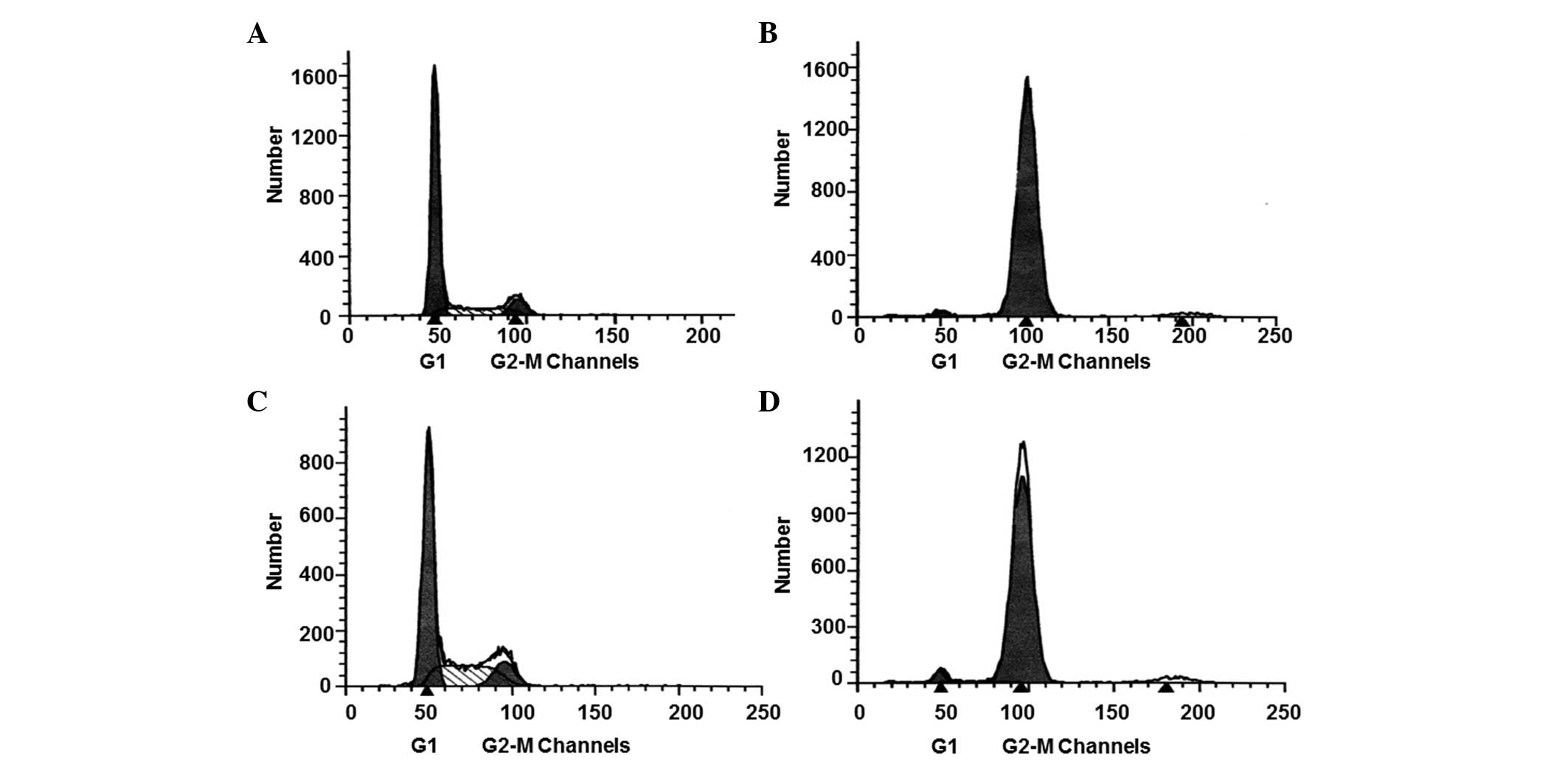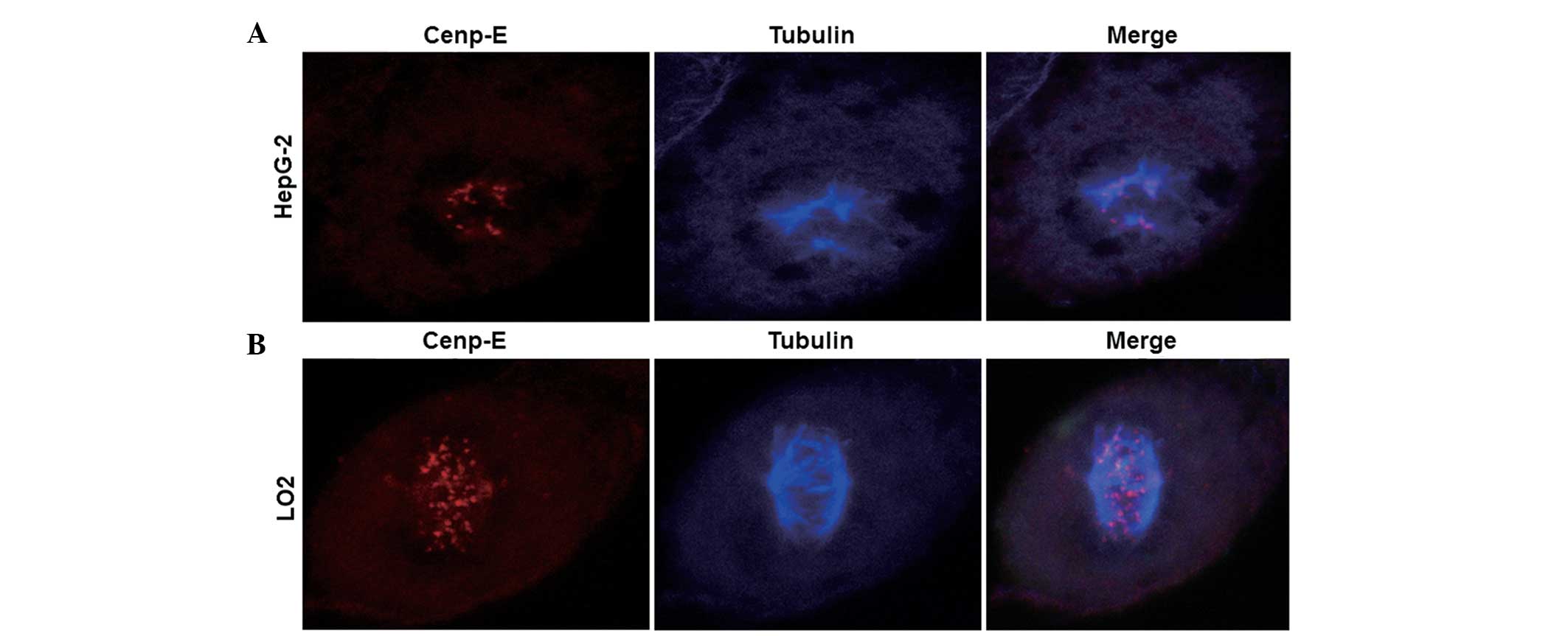Low expression of spindle checkpoint protein, Cenp-E, causes numerical chromosomal abnormalities in HepG-2 human hepatoma cell
- Authors:
- Published online on: September 18, 2015 https://doi.org/10.3892/ol.2015.3721
- Pages: 2699-2704
-
Copyright: © Liu et al. This is an open access article distributed under the terms of Creative Commons Attribution License.
Metrics: Total
Views: 0 (Spandidos Publications: | PMC Statistics: )
Total PDF Downloads: 0 (Spandidos Publications: | PMC Statistics: )
Abstract
The aim of the present study was to investigate the expression, localization and role of centromere-associated protein E (Cenp-E) in hepatoma cells. The Cenp-E mRNA expression levels in the HepG-2 human hepatocellular carcinoma and LO2 normal hepatic cell lines following treatment with nocodazole were detected by reverse transcription‑quantitative polymerase chain reaction (RT‑qPCR). Furthermore, the localization and expression of Cenp‑E protein in the two cell types was visualized using indirect immunofluorescence. RT‑qPCR was also performed to detect the Cenp‑E mRNA expression levels in LO2 cells before and after RNA interference. Additional evaluation of the function of interfered cells was performed using indirect immunofluorescence. The results of RT‑qPCR demonstrated that the protein expression levels of Cenp‑E in the two cell lines prior to treatment with nocodazole were not significantly different (P>0.05). However, the upregulation of Cenp‑E expression levels in the LO2 cells was significantly higher compared with that in the HepG‑2 cells during cell division (P<0.05). Indirect immunofluorescence analysis indicated that the Cenp‑E protein was predominantly located in the nucleus, and that Cenp‑E protein expression in nuclei with abnormal mitosis was markedly lower compared with that in nuclei exhibiting normal mitosis. Indirect immunofluorescence also determined that the ratio of dyskaryosis was significantly higher in cells that had undergone Cenp‑E interference compared with normal cells. Thus, the present study indicated that the low expression of Cenp‑E mRNA may be an important reason for numerical chromosomal abnormalities in human hepatoma cells.













